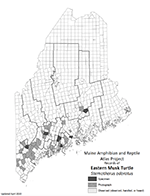Home → Fish & Wildlife → Wildlife → Species Information → Reptiles & Amphibians → Eastern Musk Turtle
Eastern Musk Turtle
Sternotherus odoratus
On this page:
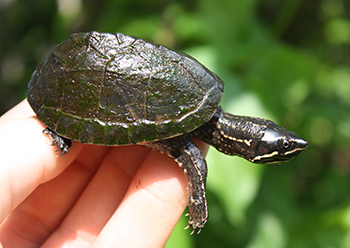
Photo: Trevor Persons
Distinguishing Characteristics
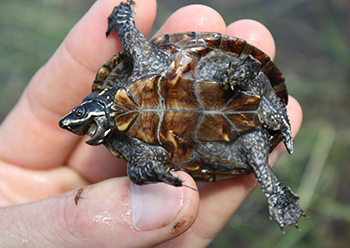
Photo: Trevor Persons
- Smallest Maine turtle, carapace (upper part of shell) approximately 2 to 5 inches in length
- Carapace smooth, high-domed, olive-brown to black; often covered with growth of algae
- Head and limbs olive brown to black, two light stripes on face and neck
- Fleshy projections (barbels) under chin and on throat
- Young have three raised keels along top of carapace
Status and Distribution in Maine
- Uncommon
- Southern and central regions
Habitat
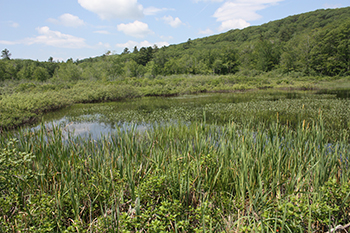
Photo: Trevor Persons
- Strictly aquatic
- Shallow areas of lakes, ponds, marshes, and slow streams
Diet
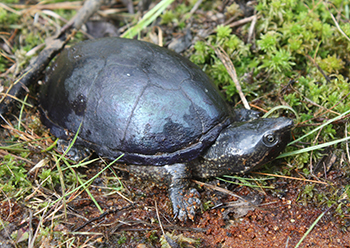
Photo: Trevor Persons
- Primarily carnivorous, eats carrion, small fish, insects, and freshwater clams, as well as algae and aquatic plants
Seasonal Changes
- Hibernates in mud beneath shallow water from late September through April or May
Natural History Notes
- Also known as “stinkpot,” produces a foul-smelling secretion from glands along the bottom of the carapace when handled
- Aggressive disposition when handled, attempts to bite
Share Your Sighting
There is much still to learn about the distribution and ecology of Maine’s herpetofauna, and we encourage members of the public to share their photo-documented observations as part of the Maine Amphibian & Reptile Atlas Project (MARAP).
To see if a township still needs documentation of a species, consult this distribution map (PDF). If a township lacks a photo or specimen record, we want your observation!
There are two ways to share your observations:
Submit your reptile or amphibian observation online
No service? No problem. Click here to download the survey to your device while connected, then take offline to collect observations from anywhere. Tip: The survey works best on Google Chrome and Safari.
Or upload sightings to the iNaturalist citizen science project through their website at iNaturalist.org or mobile app.
- When submitting an observation through iNaturalist add a description of the location (and other noteworthy information) to the “notes” field. This serves as a check on the locations automatically generated by smartphone cameras, which may be imprecise if cell service or GPS coverage is weak.
Thank you for doing your part to help conserve Maine’s reptiles and amphibians.
